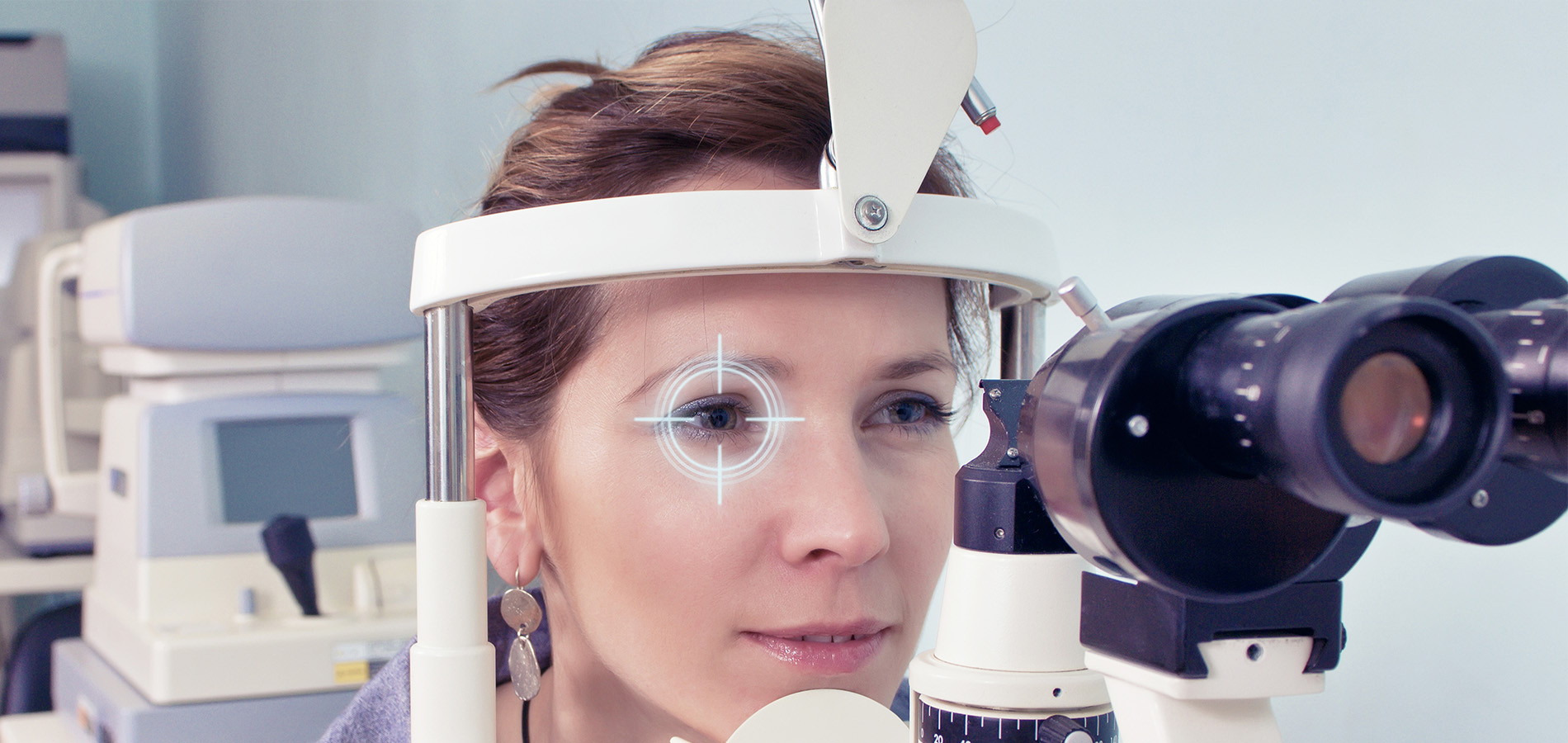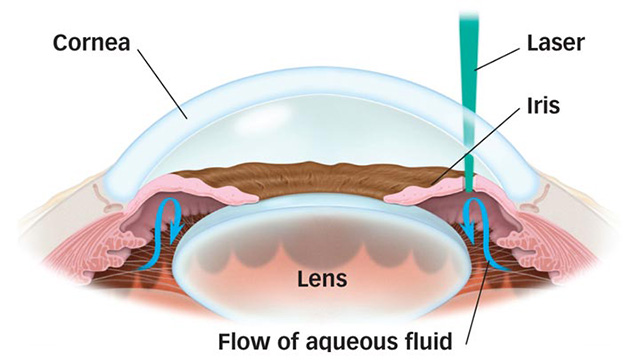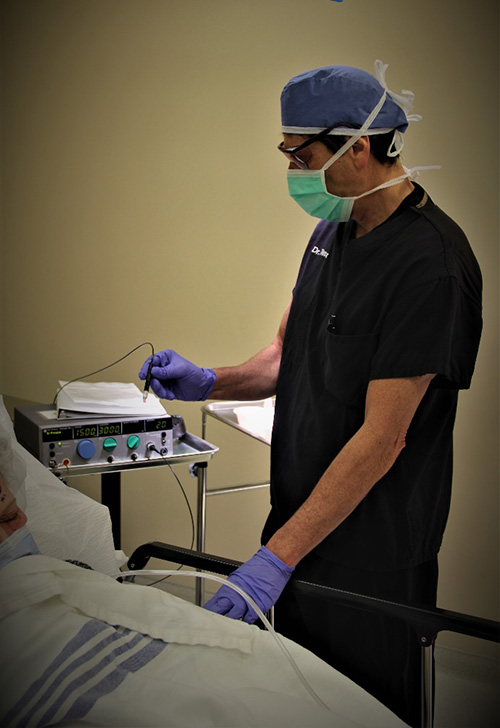

LASERS (Light Amplification by Stimulated Emission of Radiation) are devices that use concentrated light energy for a large variety of purposes in research, industry, and medicine.
Medical lasers are used to treat tissues in the body usually by heating, cutting, or reshaping the tissue.
Lasers have a wide variety of applications in the eye. The eye is particularly amenable to the benefits of laser treatment because it is optically transparent. As a result, laser treatment can reach most parts of the eyeball.
Lasers can be used to treat glaucoma, cataracts, refractive error, corneal and retinal diseases.
[Laser vision correction, also called LASIK, treats refractive error (nearsightedness, far-sightedness, or astigmatism) is one of many laser applications for the eye.]
Laser treatments are named for the tissue that is being treated, the type of laser used, the effect on the tissue, or a combination of these.
Selective Laser Trabeculoplasty (SLT) is an office-based laser treatment designed to lower the intraocular pressure (IOP). It is a simple and rapid procedure that is performed at the slit-lamp with minimal or no discomfort. The recovery is quick, and patients can resume regular activities immediately after the laser. The typical treatment time is just minutes per eye.
SLT treats the part of the eye called the trabecular meshwork, causing increased aqueous outflow, thereby lowering the IOP. It is often referred to as a “cold laser,” because it uses a mechanical pulse, rather than heat energy, to alter the trabecular meshwork.
SLT is successful approximately 80% of the time in lowering the IOP. For many patients, SLT can reduce or eliminate the need for glaucoma eye drops.
SLT can be repeated if the IOP lowering effect wears off. Generally, the IOP lowering effect can last three to five years or longer. In some patients, the IOP lowering effect is permanent after just one laser treatment.
There is little risk to undergoing SLT. There is no risk of infection and virtually no risk of bleeding. The main risks of SLT include occasional post-laser inflammation or a paradoxical IOP rise. These are usually transient side effects and resolve spontaneously or may require the temporary use of anti-inflammatory or glaucoma drops.
The IOP lowering effect takes a few weeks to occur, so patients are seen 2 to 3 weeks after the laser treatment to remeasure the IOP
In a small group of patients, there is no IOP lowering effect or the effect wears off rapidly in a few months. If this happens, it does not prevent the eye from undergoing other types of glaucoma treatment.
Laser Peripheral Iridotomy (LPI) is an office-based laser treatment designed to treat angle closure glaucoma and narrow angle glaucoma. The laser used, referred to as a YAG laser (Yttrium-Aluminum-Garnet), fires a brief, high energy laser pulse to create a tiny hole in the iris. This allows the aqueous to bypass the normal outflow path, which is through the pupil. As a result, the angle will open.
In cases where the angle is narrow, but not yet closed, the iridotomy will prevent frank angle-closure glaucoma attacks.
The treatment is performed rapidly at the slit-lamp with minimal or no discomfort. Patients can resume regular activities right after the laser treatment.
Complications of LPI are rare but can include bleeding, paradoxical pressure rise, or inflammation. Such post-laser problems will resolve spontaneously or with the use of eye drop medications.
LPI usually needs to be performed only one time and the iridotomy is permanent. Rarely, the iridotomy can close, requiring a supplemental treatment.
Diode Laser Transscleral Cyclophotocoagulation (Diode Laser or Diode TS-CPC) is a specialized type of glaucoma laser treatment. This laser treatment uses higher energy laser power to heat (photocoagulate) the ciliary body which is the part of the eye that produces the aqueous fluid. The laser probe physically touches the eye, and the laser energy is transmitted through the sclera to the ciliary body. As a result, the amount of aqueous produced by the ciliary body decreases, and this lowers the IOP.
Diode laser treatment is performed in the operating room so the patient can be sedated, and the eyeball numbed, to avoid treatment pain. The laser treatment itself is quick, and the treatment only take a few minutes.
Diode laser is usually reserved for glaucoma that is more difficult to control, or for patients where the vision is already significate compromised. Patients can resume regular activities the day after diode treatment. The IOP lowering effect is not immediate, so patients are examined usually one week after treatment.
There are several potential diode laser complications that can occur after treatment. There can be significant post-laser pain that can last for several days, requiring the use of pain medication. There can be significant inflammation, more than seen with office-based laser treatments, requiring the use of steroid or non-steroidal eye drops. The inflammation can cause swelling in the eye, included swelling of the retina. Long-term, the diode laser treatment can cause the cornea of the eye to become cloudy.
The pressure lowering effect from diode laser is often unpredictable. Sometimes the eye pressure can become too low. The pressure -lowering effect can also wear off suddenly after a short time, requiring an additional treatment. Occasionally, there is no effect.
Although the diode laser treatment has a higher side-effect profile that other lasers, and is more unpredictable, in many cases it is preferred to conventional glaucoma surgery because is very quick to perform, there is no risk of bleeding or infection, and there is a quick recovery.
Make an Appointment




